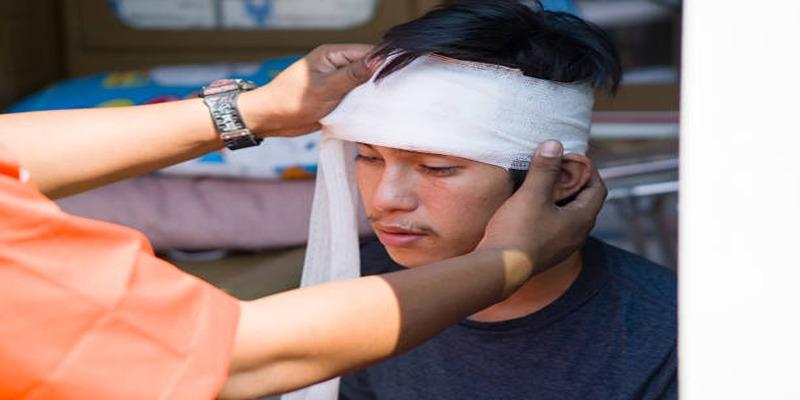Traumatic brain injuries (TBIs) are a major health issue that usually occurs due to acute trauma to the head. In this article, we will discuss the most prevalent causes of TBIs and explain how they develop, in addition to steps that can be taken to avoid them.
Definition of TBI

A traumatic brain injury (TBI) refers to a disruption in the normal function of the brain due to an external force, like a blow, jolt, or penetrating head injury. TBIs vary in severity from mild concussions with temporary effects to serious injuries that can lead to long-term effects or even death.
Significance of Knowing Causes
It is important to know the causes of TBIs both for prevention and treatment. By knowing the most frequent situations that bring about such injuries, individuals, communities, and policymakers can prevent their occurrence. Creating awareness about TBIs can also result in faster detection and appropriate care, which limits long-term effects on the victims.
Primary Causes of TBIs
Falls are among the most common causes of traumatic brain injury (TBI), particularly in children and elderly. Nevertheless, various factors may be responsible for TBIs in the different age groups and settings. Some of the main causes of TBIs include:
1. Falls
Falls are responsible for a high percentage of TBIs, especially in the elderly and very young children. Slipping on floors that have been wetened by rain or spills, tripping over objects, or falling down stairs can result in head injuries from minor concussions to catastrophic brain injury. Employing safety precautions, including the placement of grab bars, use of non-slip mats, and the supervision of children, will greatly decrease the likelihood of falls.
2. Motor Vehicle Accidents
Motor vehicle crashes with cars, motorcycles, bicycles, and pedestrians are leading causes of TBIs. Sudden trauma in a car crash can cause the brain to be shaken inside the skull, resulting in injuries that can range from minor to severe. Traffic rules, wearing seatbelts, and helmets are also vital precautions to avoid head injury in car accidents.
3. Sports Injuries
Full-contact sports like football, boxing, hockey, and soccer increase the risk for TBIs because the head is subjected to repeated impact. Even casual recreation like skateboarding or bike riding can result in injury without wearing protective equipment. Wearing helmets, mandating rules that inhibit unsafe play, and teaching athletes what concussion symptoms to watch for can reduce this risk.
4. Assaults
Physical assaults, including blunt force trauma to the head, are another significant cause of TBIs. Domestic violence and street fights often involve head injuries, which may go unreported in some cases. Raising awareness, offering protection to victims, and addressing societal issues contributing to violence are vital steps in reducing these cases.
5. Explosive Blasts (in Military Settings)
Members of the military are frequently exposed to blast events, which generate shock waves capable of causing TBI. These injuries can result from the immediate impact of the blast or secondary injuries from flying debris. Enhanced protective gear, situational training, and post-deployment medical assessments are essential in minimizing brain trauma in such environments.
6. Struck by or Against Objects
Being struck by falling objects, machinery, or other hard surfaces can lead to TBIs. This is common in workplaces like construction sites or industrial settings but can also occur in everyday activities. Adhering to safety standards, wearing helmets when required, and maintaining hazard-free environments are effective prevention strategies.
7. Domestic Violence
Domestic violence is a tragic and under-discussed cause of TBIs, particularly among women. Repeated blows to the head can result in both acute and chronic brain trauma. Providing resources and shelters for victims, along with law enforcement intervention, can play a critical role in preventing such injuries.
Risk Factors for TBIs

Traumatic Brain Injuries (TBIs) can result from a variety of situations and are influenced by numerous risk factors. Understanding these factors is crucial for prevention and effective management. Below are the primary risk factors for TBIs, outlined for better clarity:
Age-Related Risk Factors
Certain age groups are more vulnerable to TBIs. Older adults are prone to falls due to reduced balance and coordination, making them a significant at-risk population.
Gender Differences
Men are statistically more likely to experience TBIs than women, primarily due to engaging in high-risk activities or occupations. Risk-taking behaviors associated with certain demographics also contribute significantly to this disparity. Awareness and precautionary measures in such populations are vital for injury prevention.
Participation in Contact Sports
Engaging in high-impact sports increases the risk of TBIs, particularly among young athletes. Sports such as football, hockey, and boxing involve repeated blows to the head, which may lead to concussions or more severe injuries. Proper protective equipment and adherence to safety protocols are essential.
Occupational Hazards
Jobs involving manual labor, construction, or heavy machinery carry a higher risk of TBIs due to possible falls or accidents. Workers in these environments must follow strict safety guidelines and use protective headgear to reduce the likelihood of sustaining a head injury.
Prevention Strategies
Preventing traumatic brain injuries (TBIs) requires a combination of individual caution and broader systemic efforts. Below are some key prevention strategies aimed at reducing the risk of TBIs across various environments and activities:
Promote Fall Prevention
For older adults and young children, implementing fall prevention measures is critical. Simple actions such as installing grab bars in bathrooms, using non-slip rugs, ensuring adequate lighting, and clearing clutter can significantly reduce falling hazards. Additionally, balance exercises and physical therapy can enhance stability for those at higher risk.
Encourage Safe Driving Practices
Abiding by traffic laws, avoiding distractions like phone use, and wearing seatbelts are fundamental measures for minimizing head injuries in motor vehicle accidents. For motorcyclists and bicyclists, wearing properly fitted helmets is crucial. Public awareness campaigns on road safety can also have a significant impact.
Enforce Safety in Sports
Ensuring athletes wear appropriate protective equipment, including helmets, and educating them on the early signs of concussions are vital. Schools and sports organizations should enforce rules prohibiting dangerous play, and coaches should promote a culture of safety over competition.
Address Workplace Safety
Employers must prioritize safety measures, such as providing protective helmets and ensuring that work environments meet safety regulations. Regular training sessions for employees on identifying and mitigating risks can also make workplaces safer.
Conclusion
Traumatic brain injuries are a serious concern, but proactive measures like enforcing safety standards, increasing awareness, and supporting community initiatives can make a significant difference. By prioritizing prevention and education, individuals, workplaces, and communities can work together to reduce risks and promote a safer, healthier environment for everyone.












